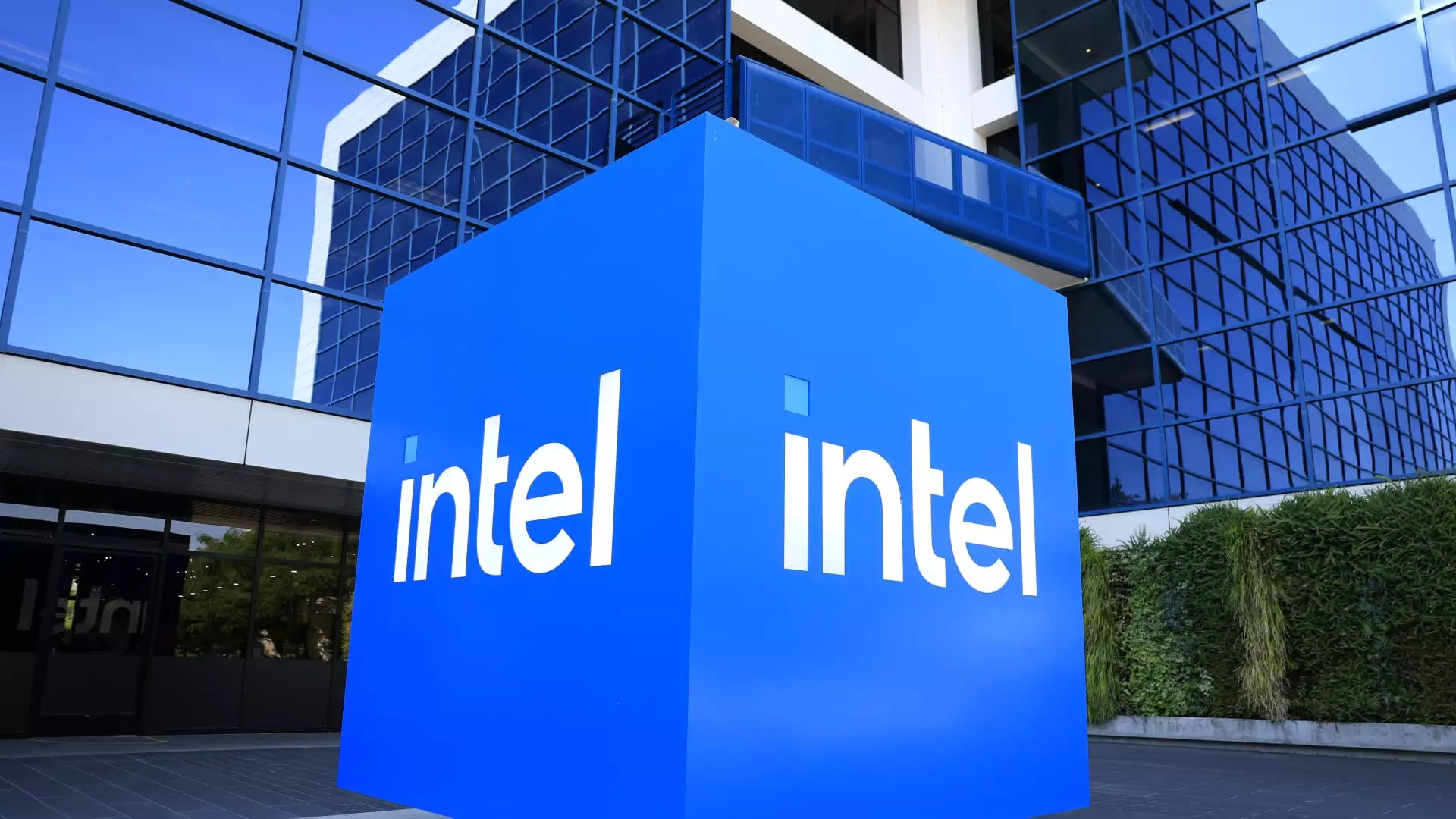Intel’s second-quarter performance might seem encouraging at first glance, especially considering its revenue beat Wall Street expectations, climbing to $12.86 billion from an anticipated $11.92 billion. However, beneath these numbers lies a stark reality of ongoing losses and strategic disarray. The company reported a net loss of $2.9 billion, or 67 cents per share—a figure that underscores the deep-rooted challenges faced by the industry giant. Adjusted figures and impairment charges further muddy the waters, with an $800 million hit tied to excess tools with no clear reuse. This indicates a troubling pattern: despite increased revenues, Intel remains mired in operational inefficiencies and underperformance. The boost in stocks following the report appears more as a reflection of temporary optimism than a genuine turnaround. Investors must be wary of superficial gains masked by transient market sentiment, especially when fundamental issues such as declining product competitiveness and labor overhangs persist.
Leadership’s Half-Hearted Reforms or Necessary Steps?
Lip-Bu Tan’s ascension to the CEO role promised a strategic overhaul—reduction of bureaucracy, cost-cutting, and renewed focus on innovation. Yet, his admission that the initial months haven’t been easy hints at the enormity of the task ahead. His decision to cut 15% of the workforce and to aim for 75,000 employees by year’s end signals a reactive mindset, possibly driven by desperation rather than strategic clarity. While trimming staff might temporarily improve a thin margin, it raises concerns about the company’s long-term vision. Are these measures merely band-aids for deeper structural faults? Given Intel’s historical dominance, such drastic cuts risk eroding institutional knowledge and innovation capacity, especially at a time when the industry’s future hinges on cutting-edge manufacturing and novel chip designs.
Strategic Miscalculations in Capital Expenditure
Perhaps the most troubling aspect of Intel’s current situation is its misguided investment strategy. Tan acknowledged that Intel “invested too much, too soon” in new factories, leading to underutilized and fragmented infrastructure. Cancelling planned fabrication plants in Germany and Poland and slowing Ohio’s factory construction reveal a reactive approach, contingent on securing major clients rather than forward-looking planning. Building a new manufacturing process, 14A, based solely on confirmed customer commitments seems prudent but also highlights a lack of confidence in future demand. This cautiousness, while necessary in turbulent times, risks further stagnation—particularly when competitors like AMD are aggressively capturing server market share. Intel’s heavy capital expenditure in the past has failed to translate into sustainable returns, and it’s unwisely doubling down on cost containment rather than innovation-driven growth.
The Future of Intel’s Market Position—is It Still Aspirational?
In the realm of market share, Intel’s outlook appears increasingly bleak. Its client computing group shows declining sales, while the data center segment, crucial for AI and enterprise applications, experiences modest growth. Yet, Tan’s ambition to regain market share feels somewhat disconnected from reality—his pledge to personally approve all chip designs before tape-out signals a move towards oversight, but not necessarily innovation. Concern arises from Intel’s vulnerability to competitors like AMD, which has steadily gained ground in server markets. The company’s strategy seems reactive, focusing on cost-cutting and internal controls rather than proactive technological breakthroughs. The future of Intel’s dominance depends on whether it can reinvent itself as a leader in high-performance, AI-ready chips, or if it’s destined to become an echo of its former self—relevant but no longer at the forefront of innovation.
Assessing the Core Challenges: A Center-Left Perspective
From a center-left liberal lens, Intel’s struggles reveal a broader pattern of corporate complacency and misplaced priorities. The company’s historic place as a technological titan should have fostered sustained investment in R&D, but instead, it wandered into unnecessary expansions and speculative projects. Its current cost-cutting measures are vital but insufficient to address fundamental issues of innovation stagnation and market relevance. A more balanced approach would involve strategic collaboration, public-private partnerships, and a concerted push towards sustainable, environmentally conscious manufacturing practices. Intel’s predicament underscores the necessity of aligning corporate strategy with societal needs—such as digital inclusivity, workforce upskilling, and responsible resource use—rather than narrowly focusing on cost savings and short-term profitability. Only through such a shift can Intel hope to regain its innovative edge and fulfill its societal role as a driver of technological progress.
In conclusion, Intel’s recent financial snapshot offers a glimpse into a company at the crossroads—facing the inertia of past decisions and the pressing need for genuine transformation. While leadership talks of restructuring and cautious investment, the core challenge remains: can Intel redefine its innovation pipeline, or will it increasingly become a passive participant in a fiercely competitive industry? The answers lie not just in numbers, but in strategic courage and a renewed commitment to technological excellence.

